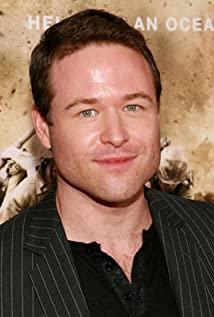The front may be a little chaotic (there are too many clues, it is not easy to describe clearly in a single line), but after reading it all, there is basically no contradiction.
First, a few key points that I will use:
First, analyze it from the perspective of a computer program, because it is easy to explain from this perspective. Those who have learned programming should be very clear, and those who have not learned it can probably understand, mainly two basic concepts, recursion and loop. The cycle is known to everyone, and others have also mentioned it. Recursion, if you haven't used it before, look at the concepts in computers.
Second, if you want to avoid it, push it instead. It means that the more you avoid the bad results you know, the more you will push them towards the results you know. In the West, this line of thinking is useful in the story of killing the father and taking the mother. In Kung Fu Panda, Turtle said, people made it happen (to the effect) on the way to avoid it. It is also used in some time-space-themed stories. For example, there are several stories in Doraemon that are like this, but that interesting story does not need much explanation, and new elements are introduced here.
Third, two concepts. Many plot hints can actually have two or more explanations. This is not to say that it is an open ending, but that it is deliberately left with a certain flexibility. It doesn't mean that one type of analysis is definitely right and others are wrong. In fact, in my analysis, there is no contradiction between Type 3, Type 2, and Type 1.
About the details: There are a lot of details that have hints, but some are just random.
First of all, explain the main line clearly. If there is any doubt, I will explain it later:
First of all, when watching the movie, I agree with the three-stage statement, which means that the three jessi pig's feet on the boat are three stages. But these three stages are in the three recursive levels of n, n+1, and n+2. At the beginning, I also felt that it was a loop, and then I felt that it was more accurate to describe the three recursion. That is to say, the three are three instances of the same class. They are in different stack spaces and run the same code, but the data areas are different. Some of them are overlapping global variables, and some of them require concurrency. The data accessed, the modification of the data in the previous level of recursion will affect the latter. In addition, these three jess are multi-threaded running concurrently, they have a common data area, and they will also operate with each other, but at key points, there are some synchronization variables to control. The jess of n+2 is destined to run to the state twice before it.
In the three stages of jess, the turning point is very clear, so it is clearer than j1, j2, j3 to describe it with boarding, rescuer, and murderer.
The main line of Jess in the three stages (here can only be used as an example from the perspective at the beginning of the story, there are reasons behind it): The
boarding person: It can be called an ignorant person, the people around him are killed inexplicably, and then he seems to understand something. When she killed the masked man and found that the ship was coming, she seemed to think she understood, so she began to prepare to save people.
Saver: She thought she knew what was going to happen and could have avoided it, and she wanted to save people. Her way of saving people is to protect everyone from being beaten to death. Because she thinks she knows what's going on, she can avoid it. For example, if she kills masked people in the theater, these people will not die (here, it is deliberately arranged that J(n) seen earlier in this instance is a masked person) of). She thought she was the only one who knew the truth and her mission was to save people. But at the beginning, he made a joke with her, and found that the victor was accidentally injured when he explained the truth and wanted to save him.
Murderer: Finally found that all efforts were in vain, so began to kill. But this her story, until the end, is not exactly the same as the previous one (this one also has an explanation, and this arrangement explains the two-type theory and the one-type theory very well).
Strictly speaking, these three titles are only the first layer. For example, the murderer jess, murder is actually another kind of salvation. Her idea of salvation is to not board the ship and go to another if-else branch, and the savior The rescue is to save the current if-else branch after boarding. The savior, who thinks he understands, is actually ignorant.
And then there's one more puzzling pivotal point in all stories: the taxi driver at the end.
Putting this statement here, I have only watched this movie once. It was a friend watching, I saw it, I started watching it from scratching the back of the victor's head, and then turned back to make up a few clips. However, I feel that basically the whole story is explained, and this circle can be considered complete. In fact, you don't need to read the part about the taxi driver, you just need to make it up to verify something.
What does the appearance of this taxi driver mean? We start with JESSIE coming ashore and going home - she sees herself and beats herself to death! This skirt J is totally out of the loop. This is over, the person in front is the person in front of him who kills the person in front of him. Why did she kill the person in front of her here? The example of skirt JESS is over, quit, and the cycle is over?
Interlude: The last episode of Jess coming home, I saw the house, the style of the house and the style of the lawn, and what I saw said at the time, "How does this house and garden style look Australian?" . The last look is indeed an Australian film. (This is also a small clue to understand the screenwriter's thinking)
Feature on the sign: "Goodbye, welcome to come again". This is clear, a pun. There are many cars of this kind that are driven out of the state or in the metropolitan area.
Driver's words: pun: "no point to save this boy". On the surface, it was said that those children could not be saved by emergency rescue. In fact, it is to remind Jess not to try in vain.
At the beginning of the car accident, I didn't understand it very well. After death, the two bodies merged into one? In fact, looking at the scene, it is very clear that it is a ghost. The evidence is obvious: this kind of slow motion, sound effects, people standing by to watch the rescue, it is a typical scene of a ghost looking at its body after death, it is seen in many movies, it is very familiar; everyone turns a blind eye to her; the one behind The driver's expression, tone of voice, and appearance characteristics imply that he is the god of death and the driver of the taxi in heaven. The phrase "give you a ride" is also very interesting. The literal translation is to let you take my car. The most commonly used place seems to be to invite people to take a ride without paying. So the meaning of this place is: "I will take you away, to where you should go".
We will follow this line and say: I am going to the pier. At this time, JESS is sober, which can be interpreted as she wants to Go say goodbye to Greg. It can also be explained that she doesn't know how she got into this cycle, she wants to go and see but she is curious (I wrote this post also driven by curiosity). Usually, people go to the underworld after death, but if there is something unfinished, they have to give up and then reincarnate. This concept exists in both Eastern and Western cultures. Then the god of death agreed. Went to the pier, here the concept of programs and recursion to explain a major mystery, and also where other versions can't explain: how did the first loop start? In this n+3 recursion in this movie, all the people Jess saw were illusory, made by the god of death. The snooze in the taxi is that the god of death puts the current thread of the instance of JESS to sleep, and then creates other objects (I will analyze this snooze later, snooze is a function call, it is polymorphic, or it is controlled by variables.) Then get on the boat and go to sea, and have a dream. This dream is the beginning of a new round of recursion. Here, the constructor is called, the data buffer is released, the initialization and so on.
After the main line is finished, it seems to be full of doubts, so let's explain it now. The topic is really just beginning. Let's start with how the first chicken came into being. The first chicken, of course, started after Entity J died.
The start of the main function is the real world:
main()
{
jess goes to an appointment;
crash;
/×In the main function, people are all living. A single mother, taking her son to sea, has a car accident on the road? There are not necessarily children in the car here. In the real world, children may be at school. It seems inconvenient to take him out to sea. Nor can they stay at home. Australian law is very protective for children. Very young children or those who are unable to take care of themselves due to illness cannot stay at home alone. Or ask a carer, or ask a neighbor or friend to take care of it, or let the school take care of it, anyway, there must be guardianship. For the first time, it is not impossible to send the child to school before going to the appointment. Anything not in the movie is possible. I also don't agree with the idea of killing a son here, I don't think it is necessary to arrange such a murder theme. In addition, there are many single mothers in Australia, some of whom lost their fathers, and more because they gave birth to children out of wedlock. People don’t think that this kind of thing is special, so it is said that children are a burden, which basically has nothing to do with single mothers (besides this situation , the mother should be able to receive government subsidies) ×/
/×Here is an important premise, the main function is different from the thread instance, so that the loop can start. This also explains why some people are wearing skirts. Because this processing flow in the real world may not be called to overturn the ink. Of course, there is another premise, which is two arguments. In fact, it makes sense whether it is in the car or not. ×/Get
on the bus and arrive at the port, the driver is waiting on the shore;
/×At this time, the people on board are all living people. This is the scene of the nap in the taxi. The function of this nap in the main function is that the god of death gave Jess's soul a temporary body, so that he could see friends, but after he made his wish, he went with the driver. So here the ghost jess meets the living people Greg in a physical state. This plot is also doomed, there will be no living people on this ship in the future, that is to say, the people on this ship are doomed to die. The god of death knew in advance that he would let them meet. Otherwise, if these people come back, then seeing the news of the JESS car accident, even if JESS did not get on the boat in the end, these people will be strange when they come back. How can the people who died before meet them at the dock? There are such supernatural events, so they all died in the storm, so that there will be no bugs in the real world. Including the hither, it can be explained that she quit the later filming for some reason, or it can be said that her disappearance implies that GREG and the group have all disappeared in the end. From the director's point of view, she can only cancel the later episodes if she can justify herself. Lose. Otherwise, there are just a few shots in front of you, and people just leave and retake it. It could also be a soy sauce, because her figure and appearance are just a typical Australian beauty. Although it is beautiful, it does not seem to be very dramatic. At least, this image cannot fight or even defend itself. The plot of this soy sauce can be explained.
×/
/× To emphasize again, there are many differences between the main function and the thread in the section from getting off the taxi to boarding the boat. ×/
/× Here Jess said I promise to the driver. First of all, in Western culture, promise is very serious. Therefore, it is not in favor of the idea of deliberately deceiving the god of death. Realistically speaking, if this is not the god of death, if you leave, it is equivalent to not giving money, it is cheating, and it is even more serious. Jess said that she is coming back, which can be considered as a misunderstanding with the god of death, or she played a side ball. . Going to sea is one day, I know you are the god of death, and I will return to you when I come back at night, not an absolute breach of promise. So the return is a big pun with three meanings. Come back when you see a friend; come back when you get on a boat; cycle back once on a big boat. It's all back.
What was her motive for going out to sea for the first time here? It's not to save the child, because at this time, she still doesn't have the memories behind her. It is to make up for the shortcomings of your life. It should be that I feel unwilling, this life, an unfortunate lover relationship, and then life is to take care of children. After a walk in this world, this whole life is a mess, and it's so short. This is the only day where you don't have to take care of the children, there may be people who like each other, and you have to go out to sea once, and fate even made a joke on me, this life is too much. Have a happy day before you leave.
So she played a trick on the god of death (Sisyphus was also smart), secretly changed the concept of return, and spent her last day in the world. The god of death played a big joke on her and gave her a big return.
*/
/*
At this point, the initialization part of the program is over, and the following enters the loop:
*/
while ()
{
new jess(n)
on board, on board After having a dream, this dream destructor and constructor. The original data structure is released and the new data structure is initialized. The old memory is only free(), and the memory area still has some private data of the class, but it is not in the data area of the new object after free. JESS:: After the constructor of JESS(n) is called, it enters the recursive call, or starts to fork out of multiple processes or threads. Judging from the arrangement of objects inside, it should be a multi-threaded call. Through this destructor and constructor, the memory is successfully turned into a dream.
After waking up, the class instantiation is completed, and the thread sub-function is entered;
//This sub-function is recursive. Our movie story, not from the first recursion, starts from the nth, n can not be inferred from the number of shally, n is unknown.
wait(condition variable or semaphore resource);
}
story(n)
{
if(n=0)
..... //The initial recursion, or even the first three times, may have additional branch code processing.
if (termination condition reached)
return 0;
else
{
story(n+1)
}
return xx;
}
explain some details in question:
Type 3/Type 2/Type 1: Type 3 and Type 2 are unified, and it was first seen from the poster. The name is triangle, which is a triangle. But what is reflected on the ground is mirror. The two sides of the Mirror can explain the port side and starboard side, because the mirror is symmetrical. But the two are different, and it can also be considered that one is good and one is evil. There is also the lens of the mirror on the ship, which is mirror, and three images. Pig's feet must go through these three stages, but as the story progresses, her experience is slightly different. There are two considerations for this difference. One is that I don't want you to understand it so quickly and leave some suspense. The other is to give hope to Jess in this rescue phase of the main perspective. Because if saving Jess starts with finding that everything is exactly the same, there's no need for her to continue. She felt that she knew the future, so she could save it, and then accidentally injured the victor. At this time, she could explain that she didn't know the details of the future because of V's injury. Although he couldn't save it, he could still save others. So still hopeful. Then she heard the radio and went to the theater. She had experienced this and knew how to develop it, so she went with a gun and successfully rescued the two of them. It seemed that she had a great hope of saving people. It's good to save two people together. This Jess said to V: I know how to save you (this you can refer to you or you), the how here means that she thinks she knows the future, so that it can be avoided. And it seems promising. At this time, she only knew the future, not the big cycle. But she didn't know it until she finally watched Sally die. All efforts are in vain, even if you change in the details, you still can't change the fate of other people being killed. And then into the last struggle, becoming Jess the murderer. You can't change the fate of others. Is there any hope of changing your own process through hard work? Can you kill other people? Therefore, there are detailed differences such as sound and jump into the sea. So in the end she said to boarding J save our son. Because she didn't know that the masked man who was hacked to death was her, she wanted to tell the latter more information in a short period of time, because she had seen the masked man hacked to death and understood that it couldn't be changed, so she simply jumped on her own. sea. Here, these changes do not mean that there are several versions. In fact, this time she recursed, although the ending has not changed, but in the end, these details have changed, and the information left to the latecomers is more than what she has ever obtained. Iteratively or recursively in this way, the iterative function may eventually converge. It does not seem to be successful, but as long as it is converged, even if the progress is not great, it is possible to return in the end. She returns 1 this time, but it may run to (if (a certain condition) return 0 ). The it return that J told S can also be understood as the return of the function. Grim Reaper uses a synchronization mechanism here to control the number of child threads on the cruise ship not to exceed 3 (another thread is waiting on the sailboat.), data does not conflict with each other, and the use of memory and processors is controlled.
Why do you say type 1? It is because it can also be understood that only the J from the current perspective is actual, and the other two are illusions created by the god of death to give her this experience, or it can also be understood as her inner demon. Or different instances of the same class. Another explanation is that these are placed in the global data structure, but this is a loop function, not a recursive function. Although recursion can be adapted as a loop, recursion plus multithreading is more appropriate.
The so-called type 3, type 2, or even multiple loops, 10 loops, large loops set small loops, in addition to increasing the complexity, the biggest problem is that you cannot deduce that only because of the experience of JESS in the movie. these modes. No matter how many types, how many cycles, how to draw pictures, reasoning, even if the process is perfectly explained, it is based on the experience of Jess that we have seen in one of these patterns. No matter how large n is, it can only cover the three loops in the movie. This assumption is not reliable, but we can assume that a reliable assumption is that JESS has to go through these three stages, and each stage has basically the same result (killing J succeeded, failed to save people, was killed). The lines of JESS also refer to "version", which can be understood as the story version or the person's version. It doesn't mean that there are people who meet, some who don't, some who are hacked to death with hoods, some who don't, those who kill, some who shoot, some who cut their throats, those who don't kill, some with guns, some with knives. A combination is one more loop or version. Versions are nearly infinite, and the number of iterations can be enormous. Similar to the exponential, logarithmic and other calculations in the computer, the results are actually converted into addition and multiplication after millions of iterations.
Tri-state, mirror, port and starboard: that poster makes it clear, both 3 and mirror. The meaning of mirror can be understood as copying but there is a difference, or it can be understood that the difference is opposite to left and right. There are a few places where there are obvious and non-obvious mirror images, the most obvious one being in the gramophone room where the camera goes into the mirror. Then the port and starboard sides were changed (there are reports that the crew took a "half boat" during the filming). Another place is the part at home. The dirty blue color of the skirt is on the right hand side. When looking in the mirror and being attacked, the blue color changes to the left hand side. Among them, the hammer is also different when the attack starts and ends. . Another not-so-obvious place is the left and right driving of the car. The direction of the car that went ashore and the position of the car beckoning. When driving to the harbor, it shows that the car is driving on the right, and the position of the driver's seat also indicates that it is driving on the right hand. vehicle. But if this is Australia or the UK, cars drive on the left. From a few details, it seems that the story is arranged in the United States. But the parking spot after hitting the pigeons feels like it's set on the left side of the road. Shrubs, trees, house style, and the light characteristics of the weather seem to be Australian style. There are also some Australian habits in the conversation before boarding the boat. When running home, you run on the left side of the road. Each of these can be explained. Together it's a little bit different.
A few features of the albatross: This one agrees with the old sailor story told in Ghost Talk. Time stops, the wind stops, and the bird dies, all fit. A few close-ups are from the car, the boat starts, the bird keeps following, and it is also mentioned in the conversation on the boat. There is another detail. Jess told the child that he was going to bury the bird, but he threw it away and left. Not being buried in the back can be thought of as seeing a bunch of dead birds and changing their minds. In the same way as before, the first non-recursive call of this function may not be buried for other unreasonable reasons.
The punishment of the god of death: I understand that this is not a big punishment, if the punishment is actually given to myself. As I said before, she played tricks with the god of death, and the god of death also gave her a small punishment. The eternal cycle of stone punishment, that is god to god. Playing this to mortals is too much. The sinker, Sally's body, Seagull's body. One explanation is to remind the audience that this is in a loop, and also remind J that it is in a loop, especially the dead seagull on the roadside once, reminding to chop off the skirt, it is no longer loop, but it is not the end. You have to find a way to get out, and you need to be enlightened. But she has no memory and doesn't know what to do, so she can only recurse in the process of "if you want to avoid it, push it instead". Some people say that what Death wants is that she chooses to follow the car. This makes sense, but is also uncertain. In Western culture, gods also come according to rules. Walking with the god of death can only be done in a certain way. For example, J has reached a certain state after several recursions, and understands certain things? Will this realization finally be achieved? Unknown. And the god of death comes to drive, which is also destined by the god of death. It is his job. If the soul has not reached a certain state, he cannot take people away. For example, let her go out to sea to die, come back and get in the car. People have risked offending Lord Death God all their lives, and they only want to be able to live for themselves this day. Isn't it a fool for you to come back like this? God, why is this? She was even more reconciled. And from the perspective of human nature, most people in Australia are relatively tolerant of cultural characteristics. However, it is relatively rare to give a large punishment at once. From this point of view, I think this recursive function will eventually converge. Not repeating it exactly as it was, that would be too boring for Grim Reaper. This program is a bit like machine learning, and each generation of J will sublimate and evolve.
Then from a procedural point of view, these objects like pendants and corpses, why only they are repeated? Because they are heap variables. Others or global variables, such as this ship, are large container objects. Most of the others are stack variables, and the scope is the same as that of functions. When the function exits, it is popped, and the object is released when people throw it into the sea. One of the reasons why there are so many heap variables is that it uses a garbage collection mechanism. There is still memory, no need to recycle, another may be that the program of the god of death has a bug and a memory leak. If it is a garbage collection mechanism, if you don't know whether it has been recycled before, you can't judge the number of cycles from the number of corpses.
Similarities and differences between real life and thread instances: these can be explained by the reuse of function calls and objects. For example, for the drums on the boat, of course, you can directly create a new drum object. Of course, which class is called in the main function is reused, and there is no need to write a new class. In reality, in the process from home to seaport, of course, it is enough to call the same function, as long as the black bag is changed. For example, in the main function, the bag variable can contain clothes, and in the thread function, the bag can contain corpses. The camera deliberately did not understand what was in the bag, because it would be difficult to tell the story if you understood it. Also because this process can have multiple versions. He shows you the static code part, but does not show you the specific value of this variable during dynamic runtime. Gives you two runs of the trace. The value of the bag variable is two or more. What 10 loops, 5 loops, is it not too tiring to write such long and smelly code? A piece of code is copied to several places, and then modified in each place, which is tiring and poorly maintained. Isn't it bad that a function can be called infinitely with variable control? Reaper should be a good coder.
The dock says "I am sorry" pun, double interpretation. The first call could be me being late. The latter can be I will kill you, the function flow is the same. It's not surprising to say sorry a few times. In Australian life, 90% of the sorry is said by both parties at the same time.
All of these program flows that we see can have multiple versions.
The table does not run, the thread sleeps, waiting for the condition to wake up.
Other small details: movie theaters. Some people say that there were movie theaters in the 1930s. This is a translation problem. A theater can also be a theater;
I feel like I’ve been here: I’ve just been here in a dream, and I’m familiar with it;
many details are meanings, foreshadowing or puns;
three copies are arranged on board, not two, the third one killed the first and It's not the second fight, so the plot unfolds well. A lot of these interesting little details;
Now that she knows, why not go to the kitchen: people are not all rational, and they may not be able to figure out the situation without making mistakes. The audience confuses the three versions, and she does not necessarily know that there are two others and which of the two is which. Each copy story is slightly different. She didn't shoot herself when she was newly on the boat, because she saw the masked man in front of her and didn't know it was herself, thinking that there was a killer hidden on the boat. I always can't bear to start with myself, and kill myself to the end (only later did I know that I stopped myself). In fact, to break the cycle, perhaps the most effective is to start with yourself, yourself, or your own copy. But considering human nature, this is normal.
Can a child see a car accident? A newborn child can see ghosts and spirits without closing its eyes, but at this time it has no language ability. When it has language ability and memory ability, this function will be lost. This kid is autistic, mentally handicapped, and draws. He doesn't speak much, and painting is his way of expressing himself. Genius and mental illness often coexist, so this mentally retarded child may have some kind of special ability. It is because he cannot express it that he can see the scene of death or the god of death. Then she shouted, and the result was "I want to avoid it, but I urged it instead." My mother looked back, causing the car accident. Another proof is that the kid can see J's ghost.
Why did J, who came back from reincarnation, know to go to the harbor? Reality J is easy to understand. Why does the J in the recursive function go? She came back and saw the note on the refrigerator, and by this time she probably didn't remember going to the harbor earlier. Because of the experience of the previous instance at that time, what she remembered was waking up from the boat. Awakening from a coma on the beach did not clear the ship's memory, as the subject had not been reconstructed. But dreaming is the beginning of the loop, the constructor. At this time, she remembers waking up from the boat, and then her companion died, at least part of the memory has been cleared. At this time, she may not know what will happen in the future on land. After killing Skirt J, I took the child to bury it, thinking it was over, but when I saw the seagull, I realized it wasn't over yet. At this time, I was confused, and the child was screaming, and there was a car accident. At this time, I thought of the note on the refrigerator, and I remembered that I was on a boat that went to sea. Can I prevent this from happening? This leaves the nth round going to the harbor. Why do you say "save our son" on the boat, because the destructor only clears the private data, and some data, which are the result of iteration, remain in the global data area. And the dream cleaning data area only shows that it stops when the sea washes ashore. So in her recursive memory this time, she remembered part of the data about her son's car accident. (Of course this is just one recursion, and each time may be different.)
J(n+3) decides to go out to sea again instead of going back to the car. It wasn't decided all at once, but after getting off the bus, going to the boat, and seeing my partner, I slowly made up my mind. At this time, she still had the memories of the previous time, and finally decided to try again. How this cycle ends does not necessarily mean that she chose to return to the car in a certain recursion. It may be that she decides to end it after landing. Maybe it is to reconcile with the self in front of you on the cruise ship, or you may choose to sacrifice, as long as one side of the triangle is broken, the cycle will end. Or go home and see that the son is with his mother, and then go to the god of death. Once she realizes that the extraditioner will come voluntarily at this time, maybe she will see all the truth at this time.
In this instance of film perspective, she is the most successful as a boarding, a savior, or a murderer. As a boarding ship, the victor and J(n-2) succeeded in self-defense. As a savior, they almost saved people, and as a murderer, they succeeded in breaking the sound. So there is a reason to do better next time. Even the j(n+1), j(n+2) who had a reason to kill her might do better, not just a simple good-for-evil or non-amnestic version theory.
The mother who is not good to the child is also her fantasy, a part of her inner demon and subconscious. The end of this recursion, hopefully sometime later, when she understands something, maybe she will see a loving mother. So she chose to leave. Then the light of heaven came, and the companions came to meet her.
View more about Triangle reviews











